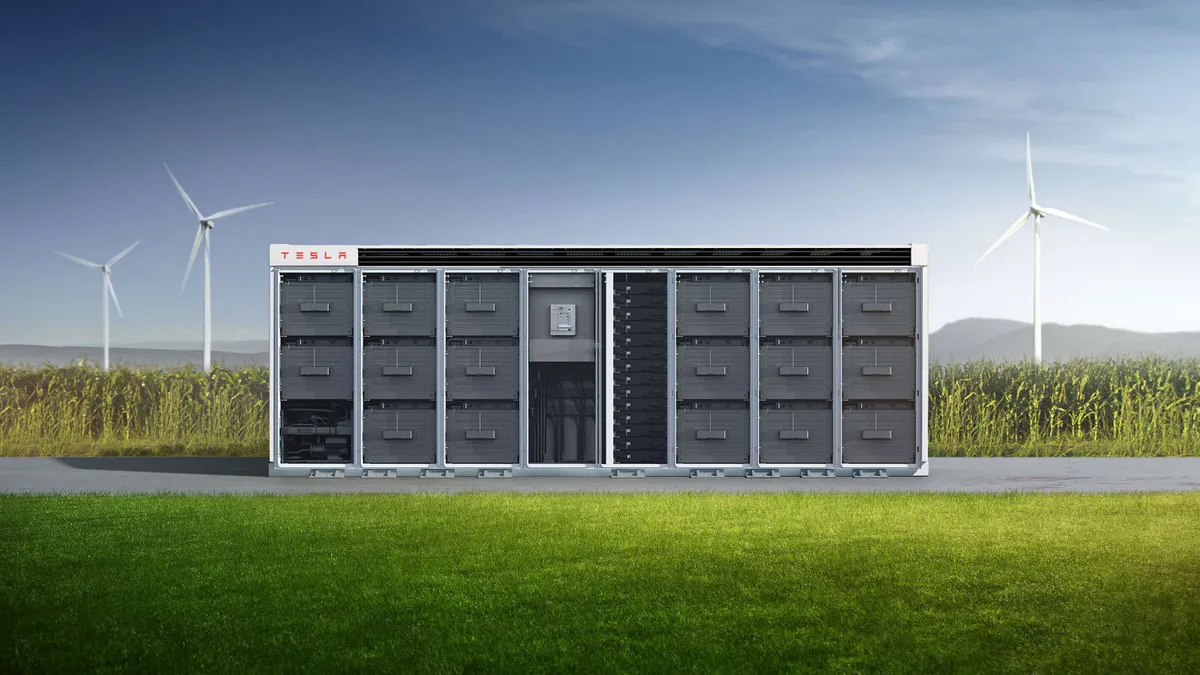Dive Brief:
- Tesla notched its eight consecutive profitable quarter, reporting more than $1 billion in net income in the second quarter of 2021 based on growth in electric vehicle and energy product sales.
- Deployments of both the energy storage and solar energy products more than tripled compared to Q2 in 2020. Tesla reported $801 million in revenue from the energy business, up roughly 60% from Q1.
- Wider availability of the Megapack utility-scale storage product buoyed storage deployments, with more than 1.2 GWh deployed in Q2. In an earnings call Monday, Tesla CEO Elon Musk said there was "significant unmet demand" for stationary storage and that the Megapack is "basically sold out through next year."
Dive Insight:
Supply chain issues and a global chip shortage continued to dog Tesla's production this year despite record demand. Although Tesla delivered more than 201,000 electric vehicles and more than doubled vehicle production compared to Q2 2020, Musk said the chip shortage "remains quite serious." The company said it was delaying the launch of its electric Semi truck to 2022 because of supply chain issues, which reached the company's energy storage business.
In a court appearance this month discussing Tesla's 2016 acquisition of SolarCity, Musk said Powerwall batteries have a backlog of about 80,000 units. The chip shortage meant the company was likely to only produce 30,000 to 35,000 units this quarter. Speaking Monday, Musk said that once the chip shortage is addressed, Tesla could "massively ramp up Powerwall production," eventually reaching a rate of 1 million units per year. To make up for the supply chain delays, Musk said the company plans to "overshoot" on cell supply for vehicles and can direct any excess to the energy products.
"I think there is demand in excess of one million Powerwalls per year," Musk said, adding that there would be "vast" demand for the utility-scale Megapack "as the world transitions to sustainable energy production."
"Solar and wind are intermittent and by their nature really need battery packs in order to provide a steady flow of electricity," Musk added.
Solar deployments reached 85 MW this quarter, a slight dip from the 92 MW in the first few months of the year but more than triple the deployment in this period last year. Tesla said its solar + storage product "remains very popular," months after Musk announced that the solar roof would only be sold in tandem with the Powerwall. Tesla has tried to position itself as a market leader for solar and storage, saying that its energy arm should see similar margins and growth as its electric vehicle business.
Musk also said it was likely that the stationary storage batteries would move to iron-based cells, relying on a more available product, while long-range vehicles will continue using nickel chemistry. This comes after Tesla had previously signaled it would switch to a cheaper lithium ion phosphate (LFP) battery chemistry for the Megapack.
Significantly, Tesla reached profitability even without including the sales of emission credits to other automakers, which had previously lifted Tesla's earnings.














